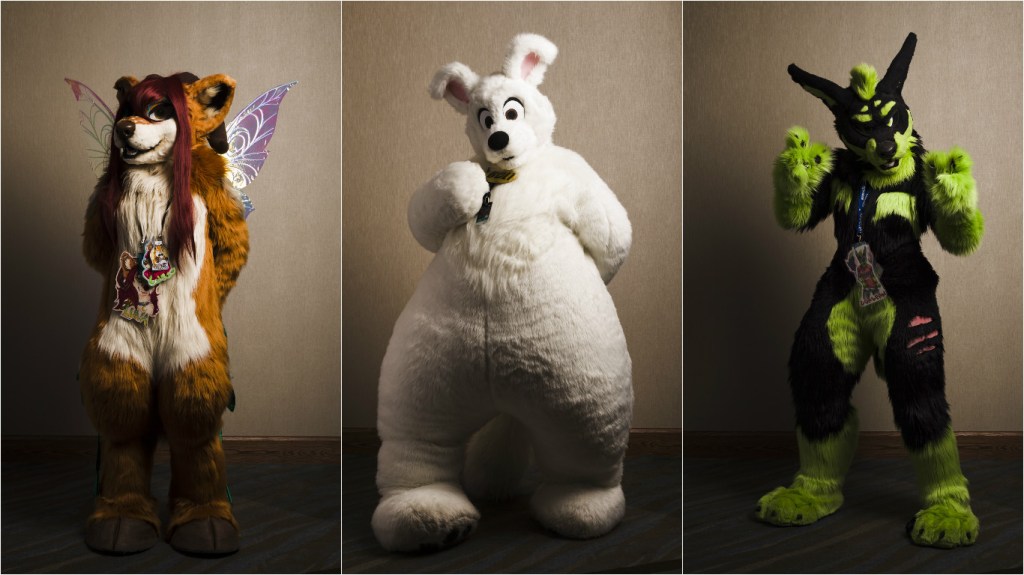Polly Morgan became an artist by coincidence when she couldn’t find a piece of non-traditional looking taxidermy for her flat and decided to make one herself. She’s been cutting up animal carcasses ever since and using them to make the type of art that pleases the eye whilst simultaneously making you think about death. I had a chat with Polly about her current exhibition Endless Plains, for which she turned a deer carcass into a bat cave, created a scenery of hummingbirds pulling octopus tentacles out of a dead fox, stuffed British birds and perched them on the frames of drawings of their nests, and sculpted lifelike silicone piglets suckling the life out of a dying tree.
VICE: Hello Polly. There’s a lot of death in your work. Does it ever get you down?
Polly Morgan: I try to keep optimistic about death in my work. I enjoy the fact that a corpse starts to teem with life as it decays. I can’t see the harm in admiring the animal form once the spirit has vacated the body.
Do you offend many people?
I don’t have much time for people who find it upsetting. They’re either the kind of person who screams at the sight of an unfilleted fish on their plate, or the kind who sentimentalises everything and talks about treating a dead animal with “respect”. I respect living animals, but I’m not so sure dead ones need to be treated in the same way. I think it’s childish to foist human sentiment onto an animal. Animals don’t gather at the graveside and mourn their dead, they very often eat them. By removing an animal from the chain, the worst thing I am doing is depriving a crow of its supper.
Why is your show called Endless Plains?
I’ve always wanted to go on safari, so I visited the Serengeti last year, hoping to see wildebeest crossing the Mara, which I did. I saw living and dead animals but it was the carcass of a dead wildebeest, hollowed out from within by vultures, which began to inspire my show. The English translation of Serengeti is “endless plains”, which became the title of my show. It struck me as a perfect description of life, death and the universe.
Do you think us humans put too much importance on our lives because we’re at the top of the food chain?
I think it is perfectly natural to put importance on our own lives. Every day we fight to stay living. It is my desperation to stay alive that motivates me in everything I do.
I read in an article that you only source already dead animals. Is that true for all of your work?
Yes. I think it would be perverse and wrong to take an animal’s life in order to try to make it look alive again. I have used animals that have been killed, but not for my use. I will use birds from a gamekeeper who is shooting them in his job, as they would otherwise go to waste and I hate waste.
Videos by VICE
Do you ever go hunting?
No.
Is it hard to become a member of the guild of taxidermists?
No, I just filled out a form and sent some money. Anyone can join, you don’t have to be a practicing taxidermist.
So I could be a taxidermist, too? Cool. What do you think of Damien Hirst’s animal carcasses?
His work has a clinical, scientific aesthetic to it that I find pleasing to look at. He manages to make the bodies of animals, unchanged for thousands of years, look ultra-modern.
Why are the piglets in your show feeding on a tree?
I can find the sight of baby mammals feeding quite alarming. I sometimes think of them as parasites, draining their host. Nowhere does it look more feverish than in piglets; pink and plump and jostling for position. It is at moments like these that you can visualise how powerful the force of life is, and this is what they represent.
What’s your favourite dead animal?
I don’t have a favourite dead animal. Living, my favourite are dogs.
What animal corpse is the most difficult to work with?
A decayed one. If it’s fresh, it is generally not problematic. The larger the animal, the more time-consuming the task, which can be tricky as the skin may start to deteriorate while you work on it. An animal with a high fat content is more laborious, as you need to remove all the fat.
Which dead animal’s the smelliest?
I don’t like the way parrot bodies smell; a musky scent that haunts my nose afterwards. Most animals smell of meat, which isn’t something I object to. It gets unpleasant if decay has set in, or if the animal has defecated as it died.
Gross. Would you stuff a human?
No, I wouldn’t! I’d prefer not to identify with my subject. I’d be curious to dissect a human for scientific reasons, but I think human taxidermy would look terrible. Taxidermists rely on a dense covering of fur or feathers to conceal the skin once it’s dried. Otherwise it can look a bit parched. I think silicone casts of humans are far more effective.
If you happen to be in London this weekend, you should check out Polly’s exhibition at the All Visual Arts Gallery in King’s Cross.



